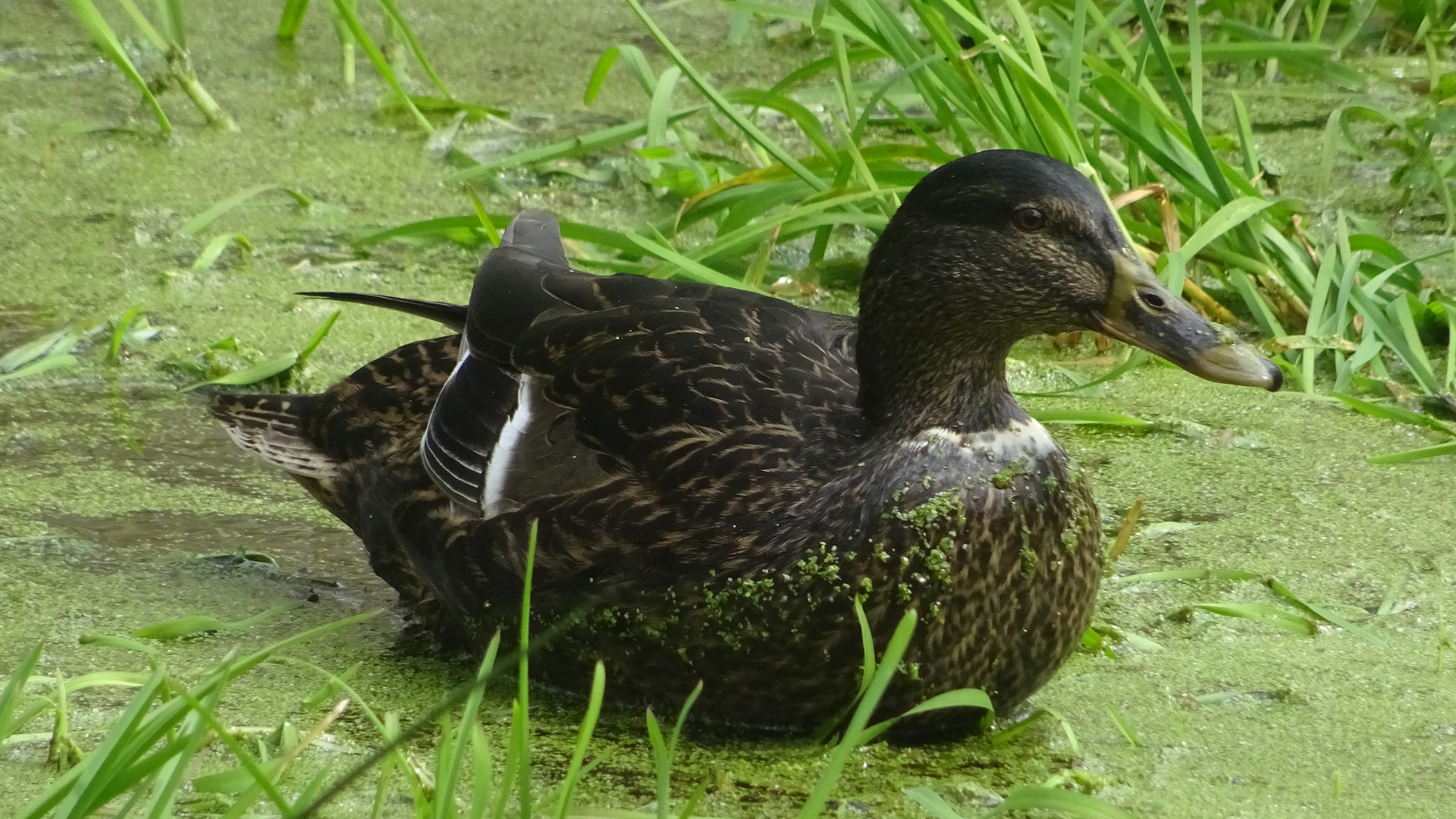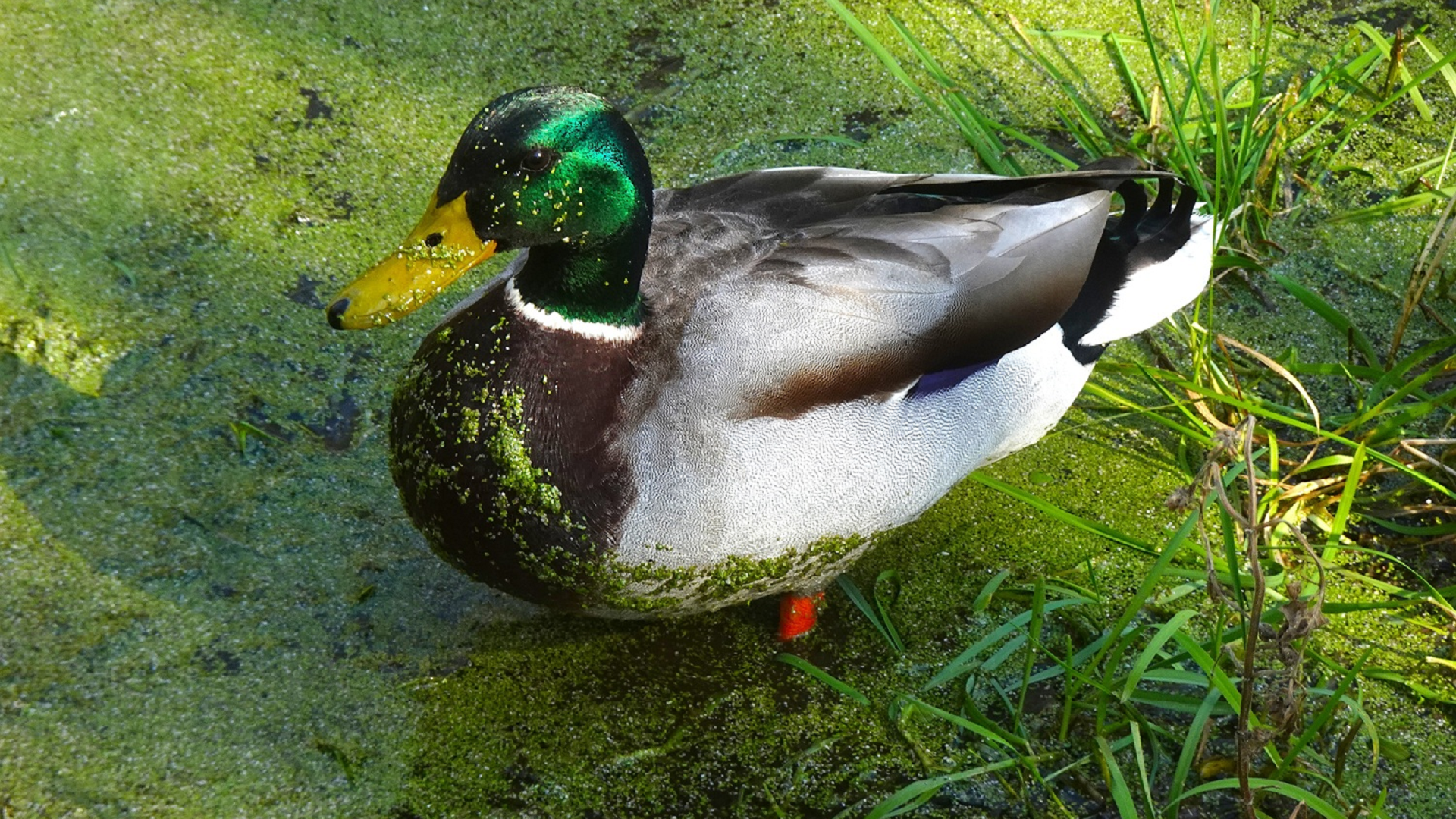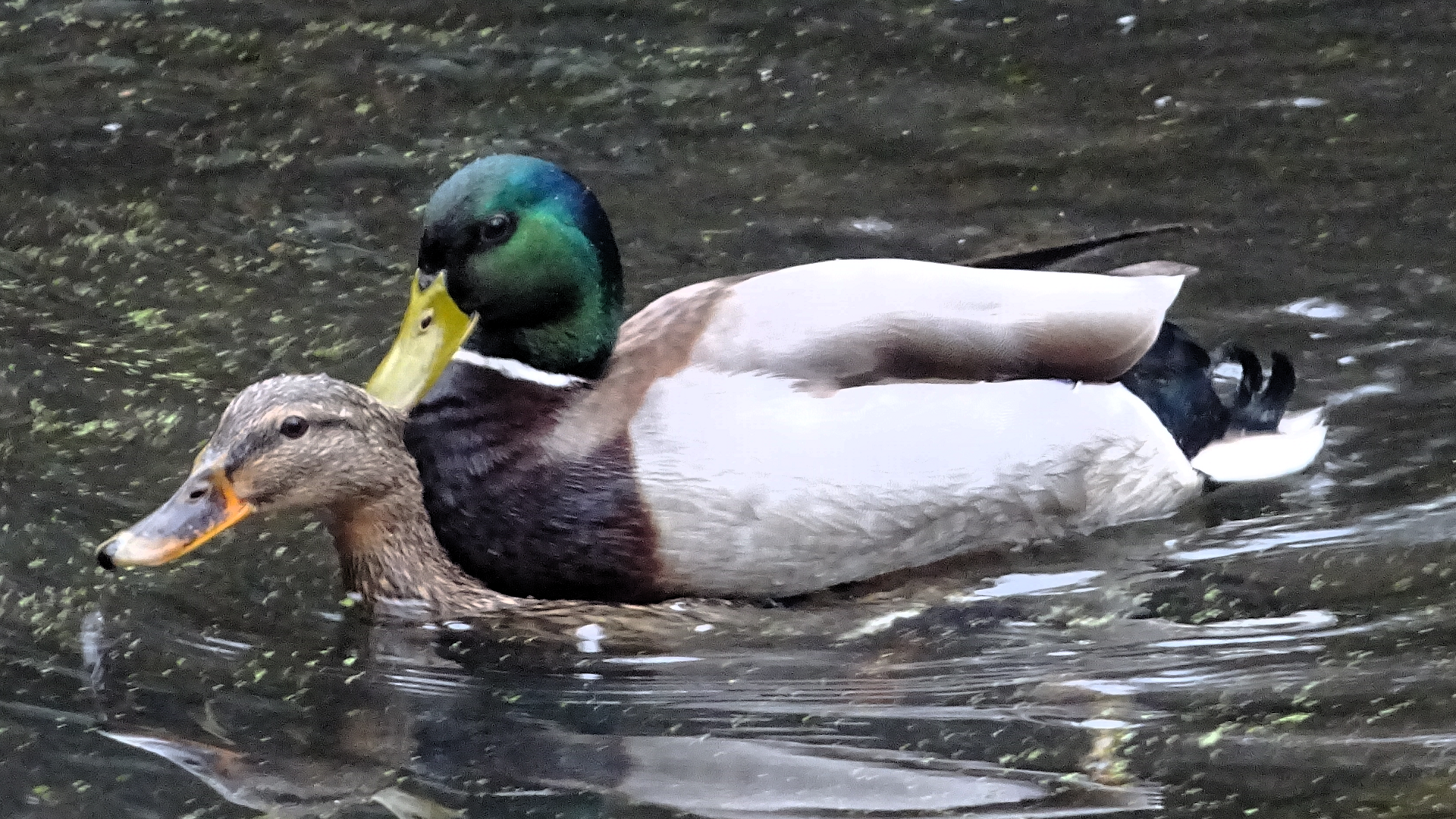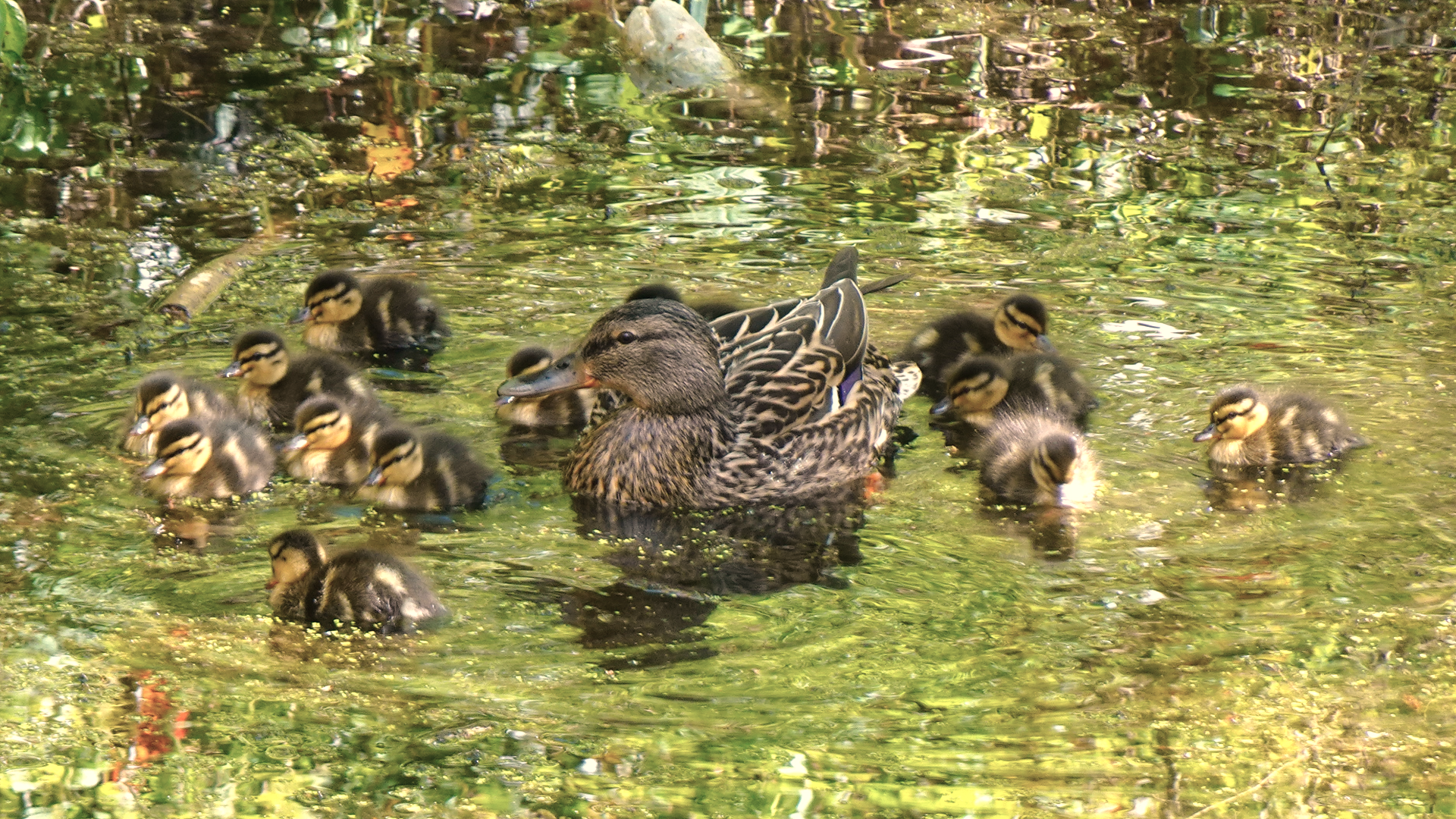Mallard
Anas platyrhynchos

TQ4792 15/03/2024 ©Raymond Small
The Mallard is a type of dabbling duck feeding mainly on the surface rather than by diving. Dabbling ducks have feet centred on their body which makes it easy to walk on land. Males known as 'drakes' have glossy bluish-green heads. Females have brown heads. Both sexes have distinct white-bordered blue patches on their wings which become more noticeable in flight. The patches are known as 'speculum'. Early autumn drakes lose colour when moulting flight feathers to grow replacements. This process is known as the 'eclipse'. Mallards typically live 5-10 years spending time in and out of water. Mallards eat vegetation, seeds, berries, insects and shellfish.

TQ4793 21/03/2025 ©Raymond Small
Mallards normally pair off during autumn and court each other through the winter. After hatching their ducklings remain in the nest for at least 10 hours. This time is spent drying out and learning to use their legs. Leaving the nest for the first time they follow the female into the water. This is normally done early in the morning. The sooner the ducklings get into water to feed, the better their odds of survival. They cannot survive without their mother and it takes 50-60 days to fledge and become independent. If a female has a successful brood she will often return to the same site the following year.

TQ4793 08/03/2025 ©Mike Rumble
The most common collective nouns used for groups of Ducks and Mallards are 'Flock', 'Herd' and 'Badling'.

© Raymond Small TQ4793 11/03/2024
Mallards courting at Roe's well. The female acknowledged a head bobbing display by the drake by lowering her neck which he grabbed with his bill to pull himself onto her back. A female can suffer neck injury and lose feathers if a male gets too rough, however in this case the coupling was over in a minute with no apparent bad consequences.
© hainaultforest.net. All rights reserved.



